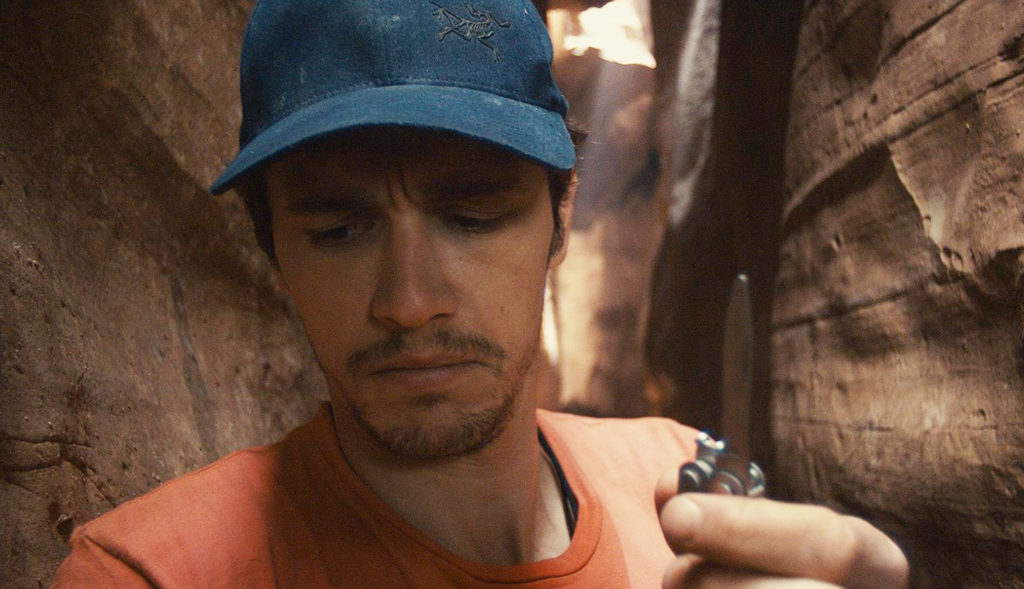Many of us remember the harrowing story of Aron Ralston. If you don’t, here’s a refresher: On April 26, 2003, the outdoorsman was canyoneering in Bluejohn Canyon in Utah when a dislodged boulder pinned him down. With no one around to rescue him, Ralston had to perform a self-amputation.
Thankfully, he survived and lived to tell the tale in his book, which became the Oscar-nominated film “127 Hours.”
But where does the movie part from reality? Take a look.
What the Film Gets Right
For the most part, “127 Hours” sticks to the facts. Ralston himself said it was as close to a documentary as one can get.
Before
In real life, Ralston was a very independent person at the time. After he quit his engineering job in Washington State, he moved to Colorado to focus on mountain climbing full-time. He had few friends in the area, which means he didn’t think to tell anyone about his plans.
During
Once in Bluejohn Canyon, Ralston met two girls and gave them directions. He began his descent soon after. The boulder fell and smashed his right hand against the wall. He yelled for help but soon realized that he was alone. Ralston spent the next three days trying to free his arm. He attempted to break the rock and lift it with a pulley system but remained unsuccessful.
Ralston himself said in an interview that it [“127 Hours”] was as close to a documentary as one can get.”
On the fourth day, a delirious Ralston decided that his only option was to amputate his arm. His tools weren’t sharp enough to do the job, so he stopped short. The next day, he prepared himself for the worst. He carved his name into the side of the canyon and recorded a video for his loved ones. Ralston had a vision of his future child, which gave him enough motivation to find a way out.
The sixth day was Ralston’s last, as he discovered that his arm was decomposing due to the lack of circulation. In a desperate state, he broke it against the boulder and then performed the surgery. Because he didn’t pack a first aid kit, which most resources generally advise, Ralston used a knife and pliers to cut the tendons.
After
Once free, Ralston repelled down the 65-foot wall and met a family who then called for help. A rescue helicopter—sent by authorities to find Ralston—arrived and transported him to a hospital.
He then made a full recovery and started a family a few years later.
What the Film Gets Wrong

Fans and critics alike enjoy “127 Hours” because it’s so accurate. But that doesn’t mean director Danny Boyle didn’t make any fabrications along the way.
Of course, these changes are purely for entertainment’s sake. After all, most of the story happens when Ralston, played by James Franco, becomes trapped in one space for several days. To engage the audience as much as possible, Boyle had to build on Ralston’s emotions.
A Little Exaggeration
Boyle extended the interaction Ralston has with the two girls before the accident. In the movie, Ralston befriends them and swims with them in an underground lagoon. This lagoon doesn’t exist in real life, so this experience isn’t authentic. He even records some of it on his video camera. The girls then invite him to a party, but he declines and heads back out on his adventure.
Once in the canyon, Ralston’s actions are nearly identical to what happened. But, again, to enliven the experience, the movie portrays several hallucinations related to various parts of his life. One of these is the previously mentioned party, while another is a fictional game show. He also imagines his ex-girlfriend. None of these visions occurred in the actual accident.
Read More: 6 Things Movies Consistently Get Wrong About Hacking
Several doctors have praised the movie for its portrayal of the self-amputation procedure. That said, Ralston didn’t actually use the tube from his water bottle as a tourniquet.
The rescue scene is almost true. Ralston’s boss, mother and friend alerted authorities of his disappearance after he failed to show up for work. They eventually noticed that he had purchased groceries in Utah, so they focused their search there.
Although these alterations aren’t factual, they help to add a bit of hope to the story.
‘127 Hours’ Works Because It’s Real
The best part of this movie is its accuracy. Aside from a few encounters with other characters and those in-depth dreams, “127 Hours” tells Ralston’s entire story down to the gory details. Film fanatics are able to see the raw reality of what happened over that tense, excruciating period of time.
Watch the film’s trailer below: